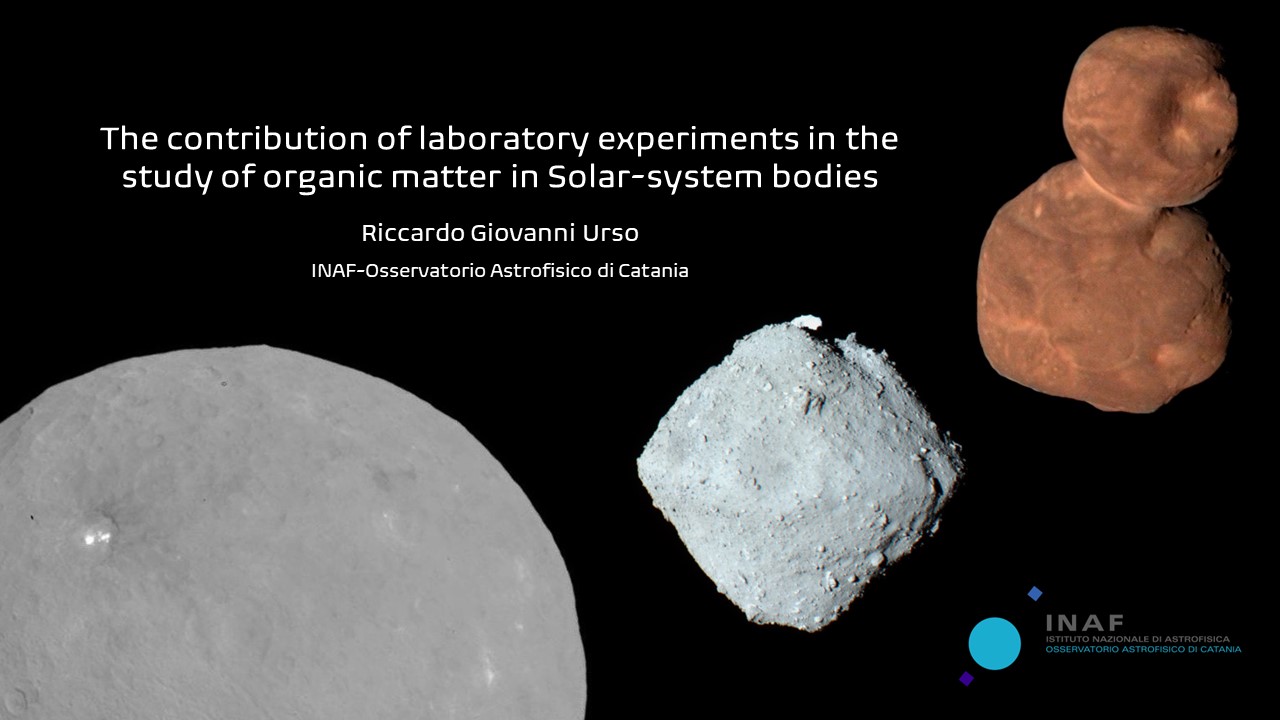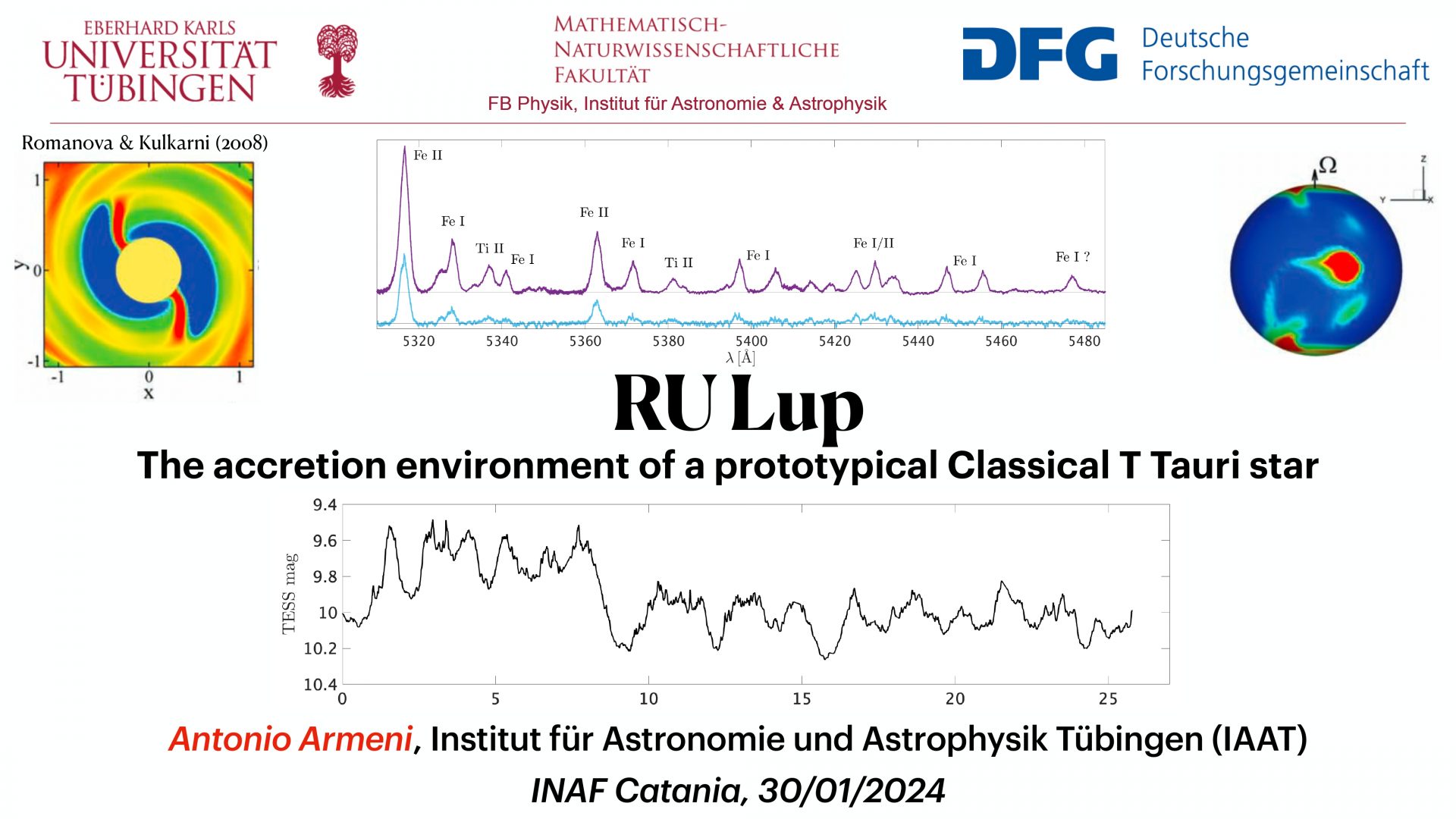Organic matter is revealed in a variety of extraterrestrial bodies, including comets, asteroids, satellites, and trans-Neptunian objects. On atmosphere-less surfaces, organics are detected in the visible and near-infrared thanks to observations performed with the instruments on-board space probes and telescopes. Further information on the properties of organics comes from the analysis of meteorites, interplanetary dust particles, and unique samples collected on comets and asteroids during dedicated space missions.
Understanding the properties of organic matter present in small bodies would allow us to shed light on processes that happened at the dawn of the Solar System, when these objects formed by the aggregation of the materials available in the protoplanetary disk. However, since their formation, atmosphere-less surfaces were continuously exposed to energetic photons, solar particles, and cosmic rays that cause the alteration of organics, hindering to draw firm conclusions on their pristine composition and origin.
With the aim to support the interpretation of recent remote sensing observations and the analysis of extraterrestrial samples, we performed laboratory experiments to study the spectral properties of organics revealed in Solar System bodies, to shed light on the alteration induced by energetic charged particles, and to suggest possible pathways for the organics’ formation thanks to processes that involved molecular precursors already available in the pre-solar cloud.
Eventi & Seminari
Calendario di Eventi
|
L
Lun
|
M
Mar
|
M
Mer
|
G
Gio
|
V
Ven
|
S
Sab
|
D
Dom
|
|---|---|---|---|---|---|---|
|
0 eventi,
|
0 eventi,
|
0 eventi,
|
0 eventi,
|
0 eventi,
|
0 eventi,
|
0 eventi,
|
|
0 eventi,
|
0 eventi,
|
0 eventi,
|
0 eventi,
|
0 eventi,
|
0 eventi,
|
0 eventi,
|
|
0 eventi,
|
0 eventi,
|
0 eventi,
|
0 eventi,
|
0 eventi,
|
0 eventi,
|
0 eventi,
|
|
1 evento,
-
|
0 eventi,
|
0 eventi,
|
0 eventi,
|
0 eventi,
|
0 eventi,
|
0 eventi,
|
|
0 eventi,
|
1 evento,
-
While it is well established that Classical T Tauri stars accrete material from a circumstellar disk through magnetic fields, the physics regulating the processes in the inner (0.1 AU) disk is still not well understood. With its long observational history and its rich emission line spectrum, RU Lup is a prime example to study this environment. RU Lup is a monitoring target within the ULLYSES survey for Classical T Tauri stars. Optical spectroscopic observations with CHIRON and ESPRESSO were obtained simultaneously with the two epochs of the ULLYSES monitoring program for RU Lup. In this talk, I will discuss the main results obtained by analyzing this collection of data, supplemented by the two TESS observations and the archival AAVSO photometry of RU Lup. |
0 eventi,
|
0 eventi,
|
0 eventi,
|
0 eventi,
|
0 eventi,
|

